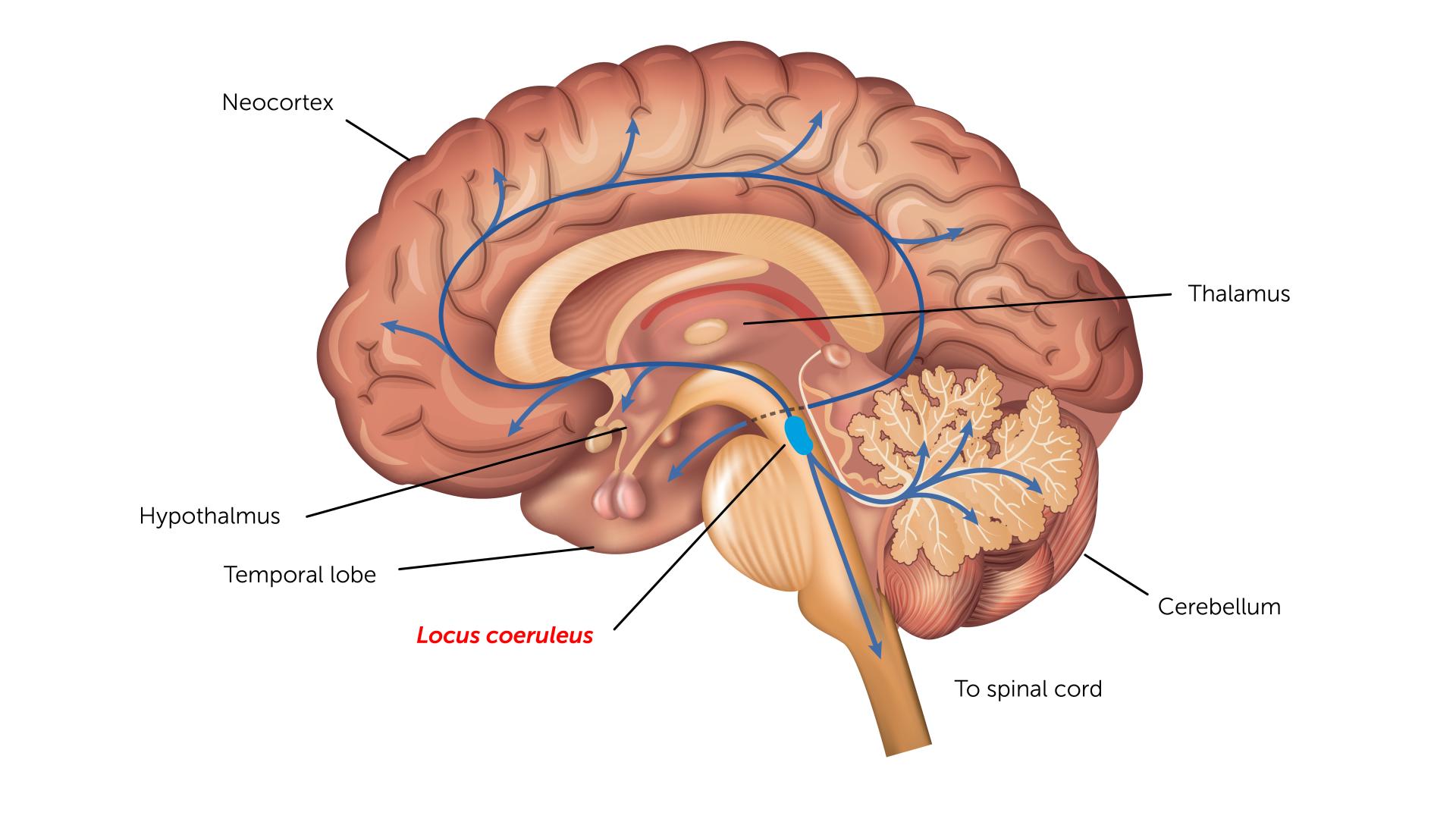Sleep Disruption in Alzheimer’s Tied to Neurodegeneration in Key Part of Brain
Written By: BrightFocus Editorial Staff



Written By: BrightFocus Editorial Staff

Neurodegeneration in a key brain region has been associated with sleep disturbances in people at risk for Alzheimer’s disease – a finding which could lead to earlier intervention and better treatment options.
What: Scientists have established new evidence that more frequent self-reported nocturnal awakenings are associated with a decline in structural integrity of a key part of the brain, the brainstem locus coeruleus (LC), in cognitively unimpaired older individuals, particularly in those with elevated plasma markers of neurodegeneration.
These results support the critical role of the LC for sleep-wake regulation in the preclinical stages of Alzheimer’s disease (AD) and hold promise for the identification of at-risk populations for preventive interventions.
Where: Heidi I. L. Jacobs, et al. “Associations between locus coeruleus integrity and nocturnal awakenings in the context of Alzheimer’s disease plasma biomarkers: a 7T MRI study,” Alzheimer’s Research & Therapy, 2021
BrightFocus connection: This research was funded in part by BrightFocus Foundation through an Alzheimer’s Disease Research grant to first author Maxime Van Egroo, PhD, of Maastricht University in the Netherlands.
Why it is important: People with sleep-related issues are at approximately 1.5 times greater risk of developing AD, and an estimated 15% of AD cases in the general population may be linked to treatable sleep problems. Researchers have long known that the LC, a small nucleus located deep in the brainstem that has key involvement in arousal, attention and memory, decision making, and stress response, plays an important role in AD as well as sleep-wake dysregulation in the preclinical stages of the disease.
In this study, researchers investigated whether MRI-assessed LC structural integrity relates to sleep measures in people with AD who do not yet have cognitive impairment. Seventy-two individuals aged 50-85 years underwent MRI to image the LC, and the research team used questionnaires to collect information about participants’ sleep quality and nocturnal awakenings. The team also measured their plasma levels for biomarkers associated with AD.
The analyses indicated two distinct LC segments of particular importance. Additionally, they found that lower MRI signal intensity within a particular part of the LC was associated with a higher number of self-reported nocturnal awakenings, and this finding was mostly evident in individuals with elevated levels of total tau.
Future research is needed to more objectively capture the sleep patterns and quality of individuals using tests like actigraphy or EEG recordings rather than self-reported data from participants. Still, these results point to the involvement of the LC in sleep disturbances and could pave the way to earlier detection of neurodegeneration in older individuals during the pre-clinical phase of AD. As increased wakefulness is a risk factor for AD, it may be possible to treat and slow disease progression by targeting disrupted sleep.
BrightFocus Foundation is a premier global nonprofit funder of research to defeat Alzheimer’s, macular degeneration, and glaucoma. Through its flagship research programs — Alzheimer’s Disease Research, Macular Degeneration Research, and National Glaucoma Research— the Foundation has awarded nearly $300 million in groundbreaking research funding over the past 51 years and shares the latest research findings, expert information, and resources to empower the millions impacted by these devastating diseases. Learn more at brightfocus.org.
Disclaimer: The information provided here is a public service of BrightFocus Foundation and is not intended to constitute medical advice. Please consult your physician for personalized medical, dietary, and/or exercise advice. Any medications or supplements should only be taken under medical supervision. BrightFocus Foundation does not endorse any medical products or therapies.
